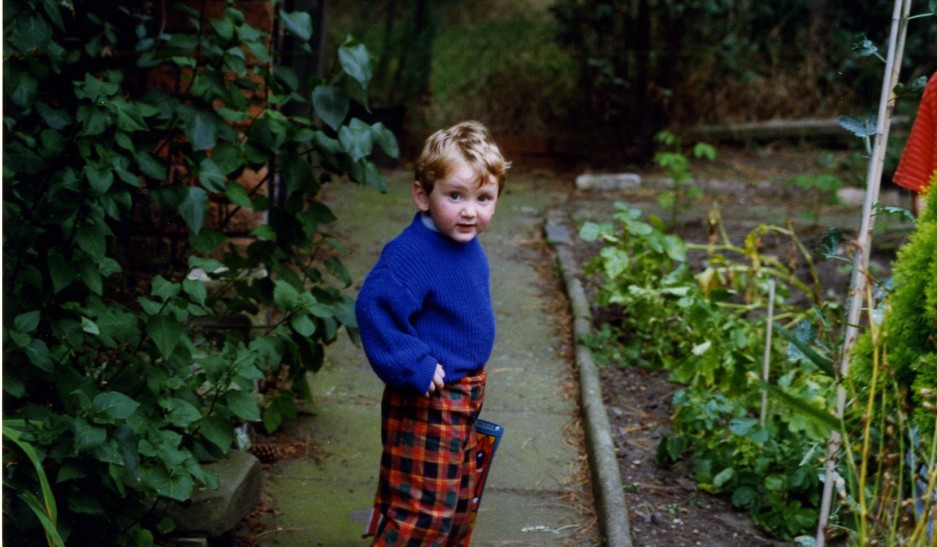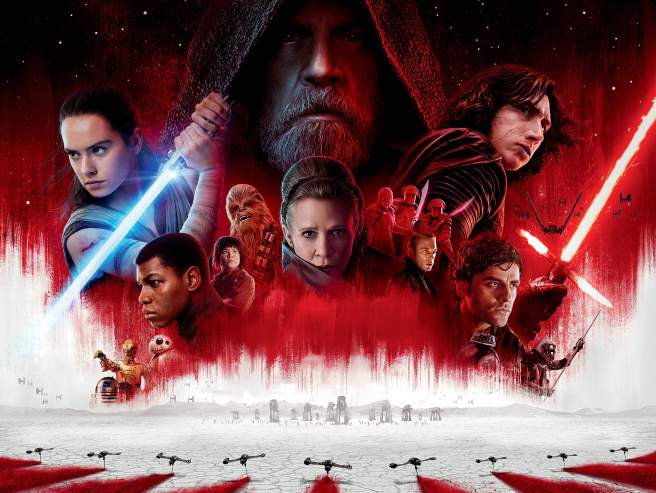There wasn’t too much riding on this one. Just deliver on the promise of two fantastically received films before it, overcome the bumpiest gestation of a Star Wars film since Solo, and perform its self-imposed task of wrapping up a nine-film saga over 42 years in the making, with the lowest-maintenance fanbase in the world, while tastefully navigating the untimely death of a key cast member three years before. No pressure. So, how did The Rise of Skywalker do?
Unlike the last two films, this felt to me a qualified success. At times, I was on a par with Richard E Grant, but this was in spite of a few niggles. So let’s delve into those first instead of the waxing lyrical about what a miracle it is that a film this extravagant, beautiful, exciting and funny even gets made.
My main bugbear is there from the start: Emperor Palpatine (Ian McDiarmid). We knew from the trailer he’d be here. What I wasn’t expecting was the film would need him to be there right from the start. There’s no big reveal, unless we count the trailer itself, and that was only for our benefit.
Viewing the films chronologically, this man had been thought killed decades ago (a significant, symbolic death that brought about the redemption of Darth Vader, now slightly cheapened). The most powerful villain in the whole saga, back from the dead, but there’s no moment of horrified realisation for any of the characters (who will, at least, have heard the terrifying legends). The story needs him straight away, so we have to take it as read in the opening crawl that he’s back. What should be a huge shift for everyone in the film happens before it’s started, and it takes a while for us to get over this wrong-footing, in spite of the film’s best efforts to bring us aboard with confidence.
The Emperor is essentially here to fulfil the role of Snoke, who was himself fulfilling the role of the Emperor in the last two films before the exciting twist of his death in The Last Jedi. Presumably this was deemed a mis-step and a big villain to unite our antagonists was desired after all. Since Snoke only ever felt like the Emperor Mark II, maybe it made sense to replace him with Mark I. Except with the impact of his first appearance and his death in the Return of the Jedi now diminished, the Emperor Mark I now has about as much standing as if he were Mark II anyway. It feels one-note, which is not to diminish McDiarmid, who’s deliciously evil as ever, but where do you go from Return of the Jedi?
You go to Return of the Jedi again, it turns out, with the Emperor largely showing us his trick again. Forcing Rey (Daisy Ridley) to watch her friends struggle in battle is a direct lift, with even the motive the same, and no extra splash of colour from Sith mythology or even more Star Wars genealogy can quite shake that feeling.
Which brings me to my other issue: the reveal of Rey as Palpatine’s granddaughter. Quite apart from how it’s handled (compare the high-stakes, personal face-off of ‘I am your father’ to Rey learning her origins from Kylo Ren (Adam Driver), who also happens to know; do we really feel this?), or the other, fussier questions this throws up (when did the Emperor have children? Does George Lucas now have to add a young Jodie Comer into the background of The Empire Strikes Back somewhere? Wait, how did the Emperor survive again?), it just feels like a climb-down. The twist gives Rey a more personal stake in the endless family dramas of this franchise, but when it reneges on The Last Jedi’s bold reveal that Rey’s parents were ‘no one’, in a film that championed the importance of ordinary people standing up, not just the space aristocracy, is it really worth it?
Where The Last Jedi made such brave choices, from killing the trilogy’s main villain a film early to making Rey’s parents no one of significance, The Rise of Skywalker backpedals to more comfortable places. It’s a fantastic, entertaining family adventure. But it feels very ‘safe’. The Force Awakens gave us a healthy dose of nostalgia with new, exciting elements thrown in. The Last Jedi started to question simple reverence of the past, and set us up for a showdown between Ren wanting to tear down all from before and Rey keeping a small flame of the past alive. The Rise of Skywalker…. well, given the history of this franchise, it’s not surprising nostalgia wins out. But in the end, we never even have the conversation.
So it is that we’re treated (and it is a treat) to an X-Wing rising triumphant from the water (same music as the corresponding moment in Empire), a trip to the remains of the Death Star (no, the second one), Lando Calrissian (Billy Dee Williams, for a few whole minutes!) the twin suns of Tatooine (a beautiful final shot), and much, much more. Where The Last Jedi is sceptical of nostalgia, The Rise of Skywalker embraces it. And, as you’ll see, it won me over. But we never have that new, more interesting confrontation that we could have had. We end up back in The Force Awakens territory. And I love The Force Awakens. But we’ve been there before.
(While we’re on the subject of backtracking from The Last Jedi, Kelly Marie Tran as Rose is side-lined throughout in a way that feels apologetic. Maybe Tran herself was happy to have a smaller role if it meant less abuse from ‘fans’, but I hope this wasn’t simply the filmmakers giving in to bullies. Never mind it robbing the vast majority who liked the last film of a satisfying conclusion to that character’s storyline; the message it sends is just plain wrong.)
We’re out of the dark, murky woods of my criticisms. Here’s a GIF to celebrate.
Where there’s little divergence from the previous films is, surprisingly, Leia’s (Carrie Fisher) role. Her absence is handled as well as it can be, and I can’t help but feel the way her story ends isn’t so different from what was planned from the very beginning. It seemed inevitable that Leia would set her son on the path to redemption, even if it’s done in slightly fewer beats than it might have been. But done it is, and Han’s (Harrison Ford) surprise reappearance cements it. The fatal father-son stand-off from The Force Awakens is re-staged and corrected, on the wreckage of the Death Star, from which Starkiller Base, the site of their last confrontation, was perverted (the past is embraced fully and wrongs are righted).
Another piece of continuity from the last two instalments in this trilogy: we have here yet another candidate for the funniest Star Wars film. Diminutive droid technician Babu Frik (voiced by Shirley Henderson) gradually generated hysterics in the audience when I went to see it, during an otherwise poignant scene of C-3PO’s (Anthony Daniels) memory wipe. Each re-appearance got its own cheer.
The relationships between all our leads sparkle and it makes for some great comic moments. My personal favourite was General Hux’s (Domhnall Gleeson) confession to Finn (John Boyega) and Poe (Oscar Isaac): ‘I’m the spy.’ ‘WHAT?!’ It’s a broad laugh that punctures all the grandeur you trick yourself into expecting after a childhood spent buying into the mythology of it all, even though fun is what the Star Wars films were always really about. (Incidentally, how fantastic to see Hux blasted down a corridor with the contempt he deserves. A boy playing at soldiers for the whole trilogy, finally overshadowed by a proper henchman in Richard E Grant, who I only wish we could have had in these for longer; he’s magnificent.)
And one more piece of continuity, not just from The Last Jedi but also successfully harking back to the first ever Star Wars, and to every classic film where the cavalry suddenly arrives. That wonderful moment, perhaps my favourite in the whole film, in the climactic battle when all hope seems lost, and Poe realises their calls for help have been answered after all. Lando comes in on the radio, Poe flies out and sees the sky teeming with spaceships of every shape and size, come to their rescue. What a shot. And an amazing counterpoint to the silhouetted fleet of Star Destroyers from earlier (JJ Abrams knows what to do with that shape).
Crucially, it’s the fruition of all the hope that was talked of in the last film, the hope that ordinary people would stand and fight for each other. As a First Order solider says, mystified, ‘They’re just… people.’ Star Wars has often struggled to hammer home the scale of the terrors it shows us in terms of just how many ordinary lives are touched by them. In The Force Awakens, we see a brief shot on the ground of a world of the Republic as it’s swept away. The Last Jedi went further, showing children inspired by stories of the struggle, even though they might feel removed from it. And here, no more Rebel Alliances and Resistances. Here, the Galaxy makes its voice heard, and it’s a cohesive, inspiring, glorious ending.
A fitting finale, then. And although my earlier niggles were still there in my brain when I left the cinema, so too was the rush of having been swept up in a fantastic adventure. Which, in the end, is all I really turned up for in the first place. The Rise of Skywalker may be seen as the weakest of these three Star Wars sequels, but in such a strong trilogy, there’s little shame in that.


